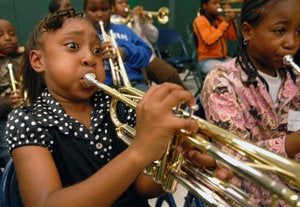
After falling steadily during the Clinton years, the American poverty rate rose under the Bush administration, increasing from 11.3 percent of the population in 2000 to 12.5 percent in 2007. Disturbingly, the sharpest jump has occurred among the country's youngest children. In 2000, there were about 4.1 million American children under the age of 6 in poverty; now there are more than 5.1 million.
What would it take to reverse that unfortunate trend? In the short term, it would take an economic recovery. As much as any specific targeted policies, it was the economic boom that lifted so many millions of Americans out of poverty during the 1990s.
But over the long term, a solution to the nation's poverty crisis is going to take something more than just a return to economic good times.
I've spent the last five years reporting on Geoffrey Canada, who runs an innovative and ambitious non-profit organization called the Harlem Children's Zone. I've written a new book about his work titled Whatever It Takes.
The book is a chronicle of the growth of the Harlem Children's Zone, which provides cradle-to-college educational and social services to 8,000 children in a 97-block neighborhood in central Harlem -- everything from parenting classes to an all-day prekindergarten to a network of charter schools.
At the same time, the book is an investigation of the way that our understanding of poverty's causes and cures has changed over the last decade or so. In the past, the assumption among policymakers was that the most effective way to break the generational cycle of poverty was to raise the income level of parents. But over the last decade, some economists have begun to argue that we should instead aim all of our serious resources and attention at children themselves. We know, anecdotally, that some children from poor families turn out successfully, despite their deprived upbringing. Why not try to systematize that process, so that poor children are regularly growing up with the resources they need to become successful middle-class adults?
As economists have been rethinking these fundamental questions, social scientists have been compiling evidence of specific targeted interventions in the lives of poor children that have given them the skills they need to lift themselves out of poverty. And so the big debate in poverty policy is no longer about which macroeconomic shifts would do the most to improve the environment for poor families -- it's about which interventions would do the most to change the lives of poor children.
To me, the most innovative policy in Barack Obama's platform is his pledge to replicate the Harlem Children's Zone in 20 cities across the country, and to commit "a few billion" federal dollars to public/private partnerships that would run those new zones.
It won't be easy to replicate the Zone. And the current financial crisis may make it harder for a President Obama (if he's elected) to shake loose the funding he would need to make his plan work. But in the end, interventions like the Harlem Children's Zone are cost-effective -- what we spend early on in a child's life on prekindergartens and parenting classes and good schools, we more than get back later on in savings on welfare payments, job training, and crime prevention. As Obama said when he announced his plan, "we will find the money to do this because we can't afford not to."